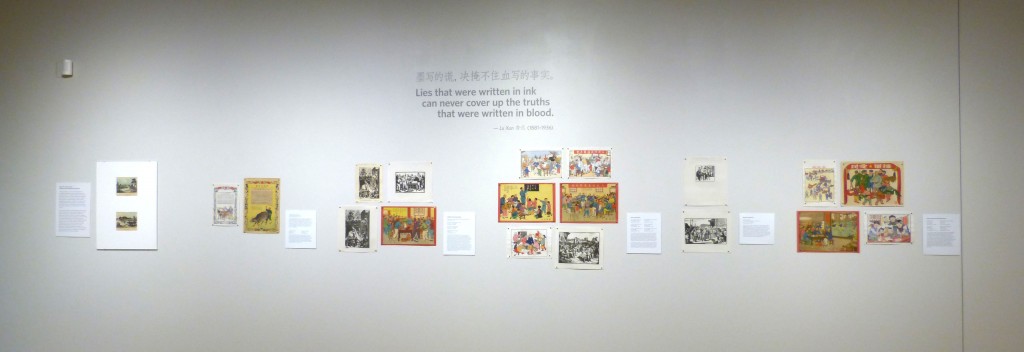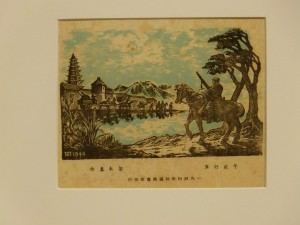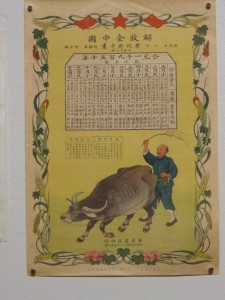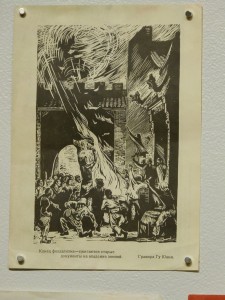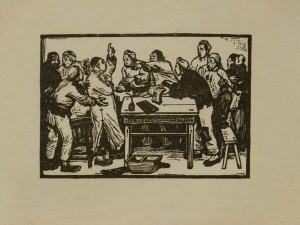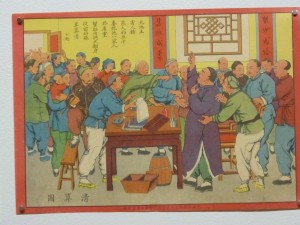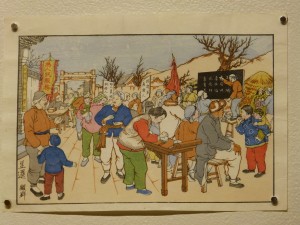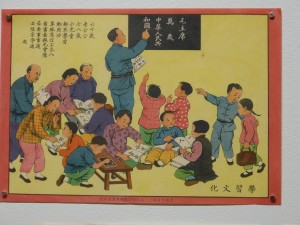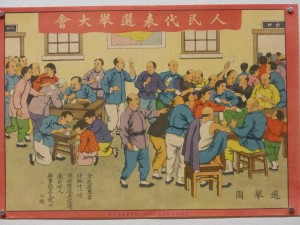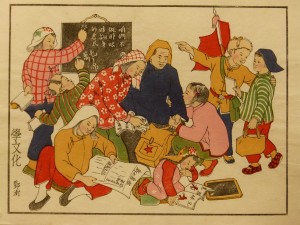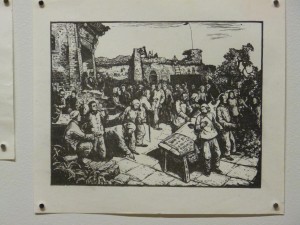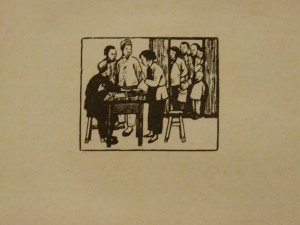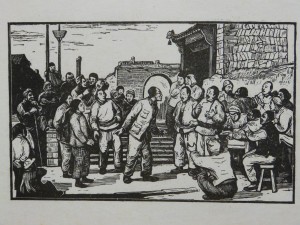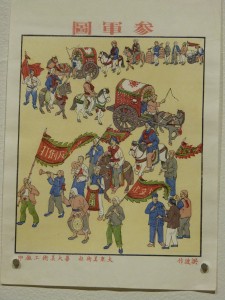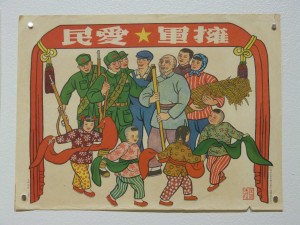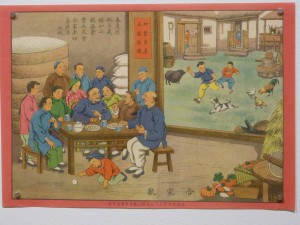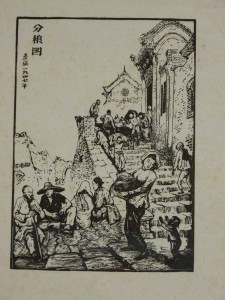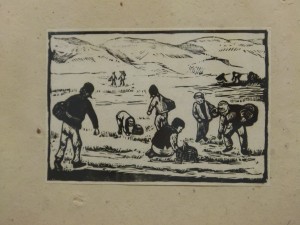墨写的谎,决掩不住血写的事实.
“Lies that were written in ink can never cover up the truths that were written in blood.”
Lu Xun (1881-1936) 鲁迅
Writer and activist Lu Xun was instrumental in promoting woodblock prints as a means of popular political criticism. The New Woodblock Movement of the 1920s-40s married traditional Chinese woodblock techniques with a newly acquired Western aesthetic favoring black and white imagery. Subject matter changed from auspicious symbols to narrative scenes depicting daily life. Subtle subtexts interrogated the status quo, as seen in the 1940s depiction of burning land deeds and people combing the ground for any bit of food.
The war-induced chaos of the 1940s gave way to order with the declaration of the People’s Republic of China (PRC) in 1949. Day-to-day activities highlight the government’s appeal to return to normalcy. Images of farmers are used on the main page of the 1949 and 1950 calendars, revealing the Communist emphasis on agrarian life. Other calendar images highlight additional agendas, such as a literacy campaign, teaching the masses how to vote, and military support from the people. Moving away from the black-and-white aesthetic of the New Woodblock Movement, the Communists embraced the hopeful, colorful woodblock print traditions of the past, reimaging them with new socialist political and cultural messages.
